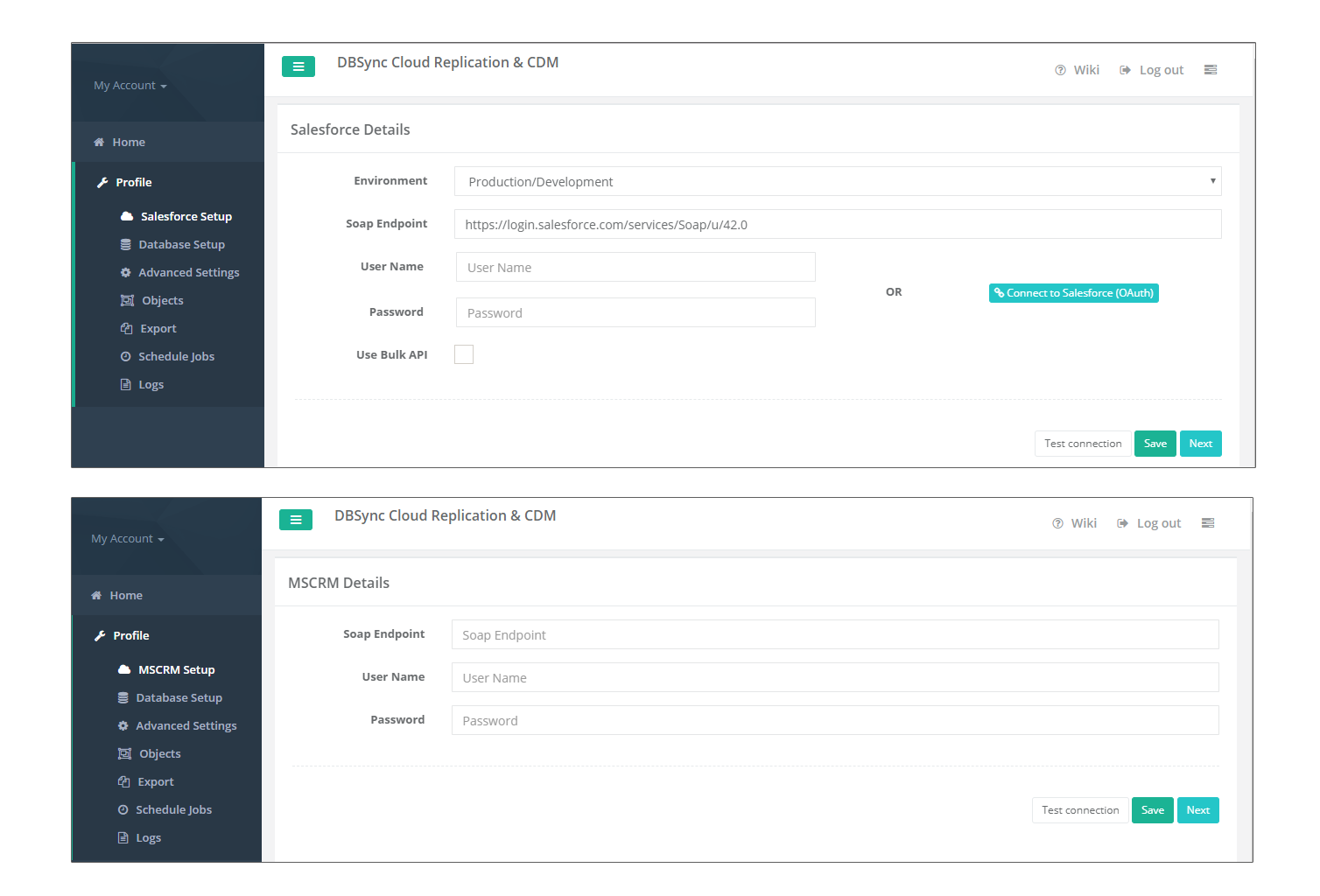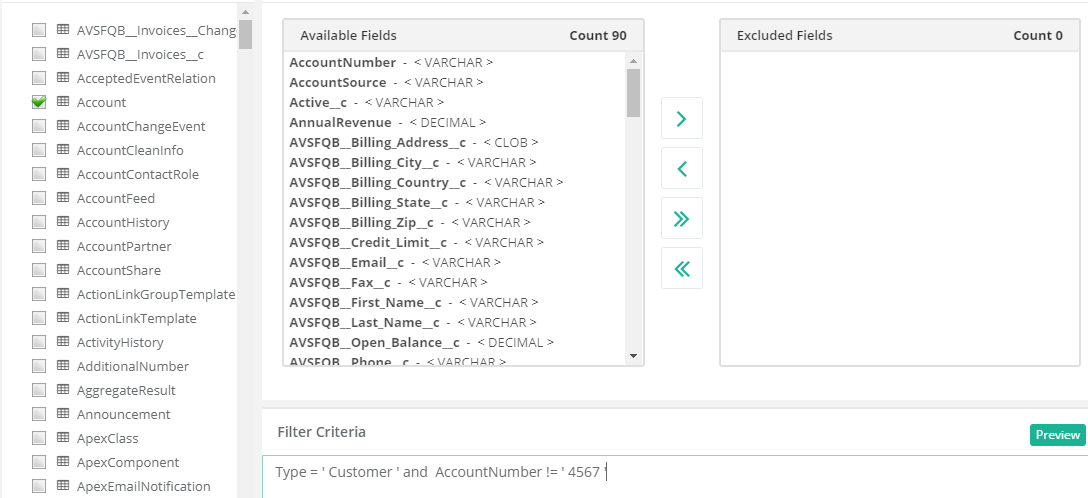2022
Page History
...
Follow these steps to configure your Source Application like Salesforce and Microsoft CRM.
- Click to "Salesforce and Microsoft CRM" Setup tab on the left hand corner in the Profiles section of DBSync Replication Portal.
- Don't change the "Environment and Soap end details", all these details are pre-filled.
- Next, enter the "Username" and "Password" credential for Salesforce and Microsoft CRM.
- "OR", "Other option for Salesforce" Click on connect to Salesforce (OAUTH) to enter Salesforce login credentials like "Username" and "Password" to connect the Salesforce Application.
- Click on Test Connection button to validate your Source Application login details.
- Click on Save button to save your Source Apps login details.
- Once completed, click on Next button to proceed to Database Setup tab.
...
Start with Advanced Settings tab, to fill all the necessary details and follow the same procedure for testing and validating Advanced settings credentials.
Follow these steps to configure your Advanced settings credentials.
...
Source Application Objects tab
Start with Source Application Objects tab, to get synced all the objects when user will get connected to different source applications like Salesforce/Microsoft CRM.
Follow these steps to synced all objects for source application like Salesforce and Microsoft CRM.
- Click to "Objects" tab on the left hand corner in the Profiles section of DBSync Replication Portal.
- Once, user has connected to source applications like Salesforce and Microsoft CRM then objects will get synced and it will show on the Objects tab.
- Select any Source Apps objects you want to sync into Database from the left Objects section as shown below.
- Select the object fields you want to sync into Database from the"Available Fields"section and use"Exclude Fields"section to filter out fields you don't want to sync into Database.
- Once completed, click on the "Run button" to Run the configuration for the Source Apps object.
- Run menu to select the required commands like Update Database Schema, Source Apps to Database (Clean Copy), Source Apps to Database (Incremental) to execute.
As per the above commands options, user has to select the Database to Source command to replicate all the sync objects to their Source Applications.
Include required control flags in the column do_sync_flag of Database table where in Source App data is already stored during previous runs for Source App to Database Replication. Selection of control fags shown in the below table is illustrated with example in the topic do_sync_flag.
Values
Description
Y
The record has been synchronized between Source Apps and Database
S
A request from an external system to indicate that the record needs to be synchronized from Database to Source Apps
D
Indicates that the record was deleted in Source Apps.
- Once user has selected and "Run" the Command, then it will redirect to user on the Log Screen Tab to see the status of command is completed or not.
Configure Scheduler Jobs tab
Start with Scheduler Jobs tab, here users can schedule the sync using Scheduler Tab.
Follow these steps to schedule the sync using Scheduler tab with scheduler functionality like run commands options, Date, Month and year format settings and repeat Drop-down menu details to set the desired duration to sync the selected objects.
- Click to "Scheduler Jobs" tab on the left hand corner in the Profiles section of DBSync Replication Portal.
- Once, user has connected to source applications like Salesforce and Microsoft CRM then objects will get synced and user can directly select the required Process from the Command Drop-down and configure the frequency of the sync by selecting a desired duration from the Repeat drop-down menu.
- Next, "Start On" option to select the Date, Month and Year from the Drop-down menu to get the objects synced for particular Date and Month format.
- Create a task in the "task section" with all the details including Task Name, Action, Command and Start Date and Time.
- Once the process is completed then click on Save & Next buttons to proceed further.
...

